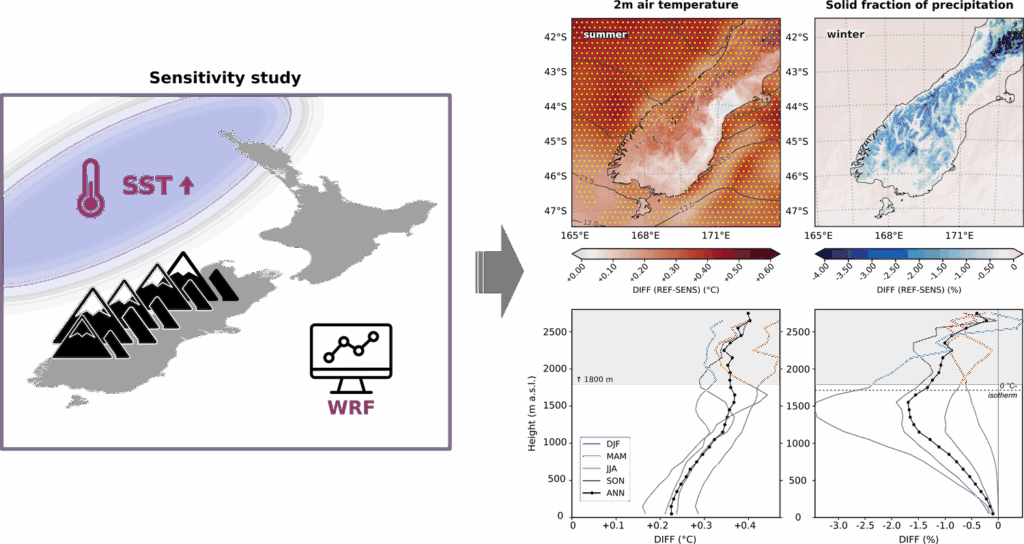The oceans around New Zealand are warming much faster than the global average, affecting the region’s climate. Mountain regions like the Southern Alps are particularly sensitive, as small shifts in temperature and precipitation strongly influence glaciers, ecosystems, and water supply. To isolate the role of ocean warming, this study uses an atmospheric model to simulate New Zealand’s climate for 2010–2020 under two sea surface temperature (SST) scenarios: observed warming and a cooler baseline (1981–2010 average). The comparison shows that warmer oceans made the atmosphere warmer and more humid, especially in autumn and summer. This most likely affected wind patterns and atmospheric moisture transport, leading to changes in precipitation across the South Island. In the high elevations of the Southern Alps, many effects are amplified, with stronger warming, reduced snowfall, and a greater dominance of rainfall.
Publication available on: https://doi.org/10.1029/2025JD043572

The oceans around New Zealand are warming much faster than the global average, affecting the region’s climate. Mountain regions like the Southern Alps are particularly sensitive, as small shifts in temperature and precipitation strongly influence glaciers, ecosystems, and water supply. To isolate the role of ocean warming, this study uses an atmospheric model to simulate New Zealand’s climate for 2010–2020 under two sea surface temperature (SST) scenarios: observed warming and a cooler baseline (1981–2010 average). The comparison shows that warmer oceans made the atmosphere warmer and more humid, especially in autumn and summer. This most likely affected wind patterns and atmospheric moisture transport, leading to changes in precipitation across the South Island. In the high elevations of the Southern Alps, many effects are amplified, with stronger warming, reduced snowfall, and a greater dominance of rainfall.
Publication available on: https://doi.org/10.1029/2025JD043572